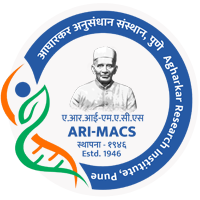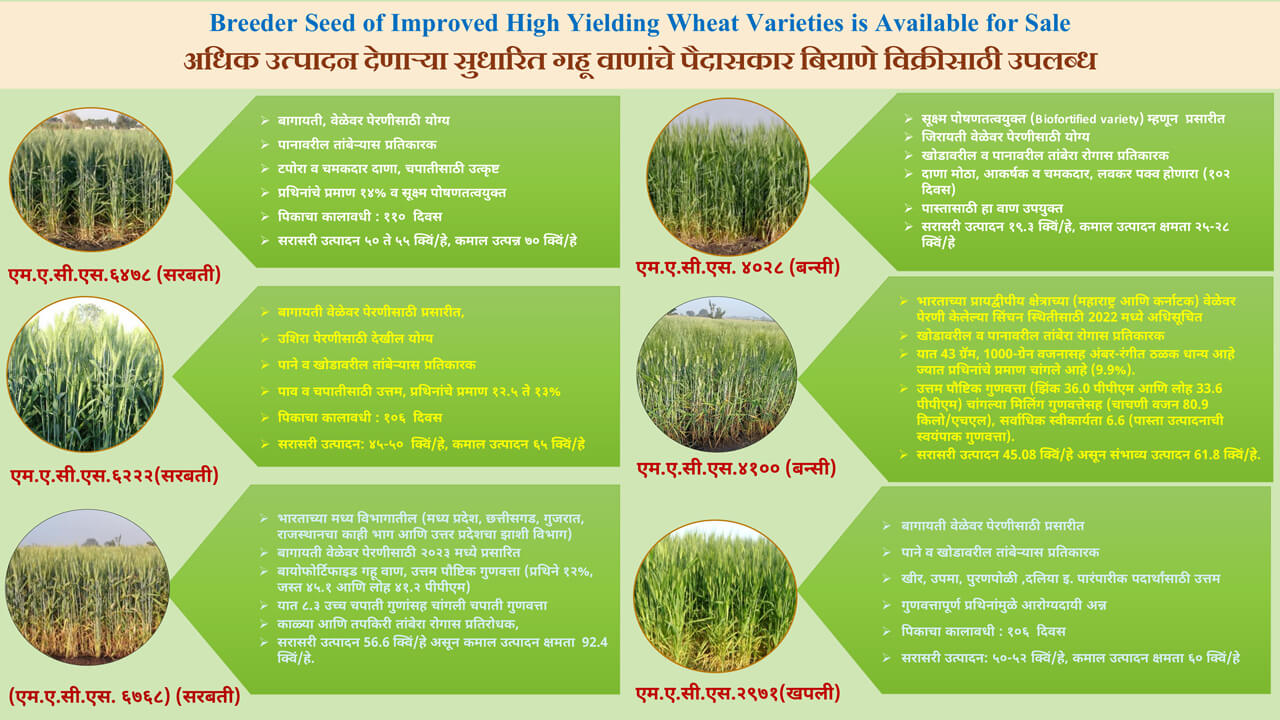
Name : Dr. Vandana Ghormade
Designation : Scientist – F
Brief Background :
- Dr Vandana Ghormade, Scientist E, Nanobioscience Group focuses her research in the potential applications of nanoscience for delivery, diagnostics and therapeutics. She is working in Nanbioscince since 2007 after completing her Postdoctoral Fellowship from AgroscopeReckenholz–Tänikon Research Station ART, Zürich, Switzerland. She was awarded the CSIR-research associateship in National Chemical Laboratory Pune. She did her doctoral work from National Chemical Laboratory, Pune in Biotechnology. She was a gold medalist in her masters in Botay from University of Pune.
- 1996-2000 PhD, Biotechnology, National Chemical Laboratory, University of Pune, India
- 1989 M.Sc, Botany, University of Pune, India; (Gold Medal)
- 1987 B.Sc (Hons), Delhi University, India
Thesis title :Dimorphism in Benjaminiellapoitrasii: a model for the study of morphogenesis and for screening of antifungal agents. (Supervisor- Dr MV Deshpande, National Chemical Laboratory, Pune).
Awards
- Award: Elected as Fellow of Maharashtra Academy of Sciences in 2015
- 2005 Guman Devi Verma Best Woman Scientist (Indian Society of Mycology and Plant Pathology)
- 2001 CSIR-Research Associateship
- 2001 Best Speaker, National conference in fungal diversity and biotechnology, K.V. Pendharkar College, Mumbai.
- 2000 Best Speaker, National Symposium on Basic and Applied Aspects of Plant and Microbial Technology, Modern College, Pune
- 1998 Prize second, Golden Jubilee Research Students Seminar University of Pune
- 1996 CSIR-Research Fellowship
- 1989 Gold Medal, M.Sc Botany, University of Pune
- 1989 Late Milind Gandhi Scholarship, University of Pune
Research Interests:
-
Nanotechnology involves the creation and utilization of materials, devices or systems on the nanoscale for in healthcare, agriculture and environment. My priority research focuses in the potential applications of nanoscience for delivery, diagnostics and therapeutics.
-
Ecological degradation and development of resistance due to pesticide can be mitigated by alternative biocontrol strategies for insect pests. A novel approach using nanoparticles as a delivery system for RNAi is being studied for enhanced uptake and improved stability of siRNA in vitro in cell line studies and in vivo insect bioassays against Helicoverpa, Spodoptera and thrips.
-
In case of human health-care opportunistic fungal infections such as aspergillosis and candidiasis are becoming increasingly prevalent among immunocompromised individuals. The early detection and therapy pose a challenge due to the limitations of conventional diagnostic methods and the reported resistance towards antifungals. We have developed Point-of-care, Rapid Lateral Flow assay and ELISA formats for the antigen galactomannan using polyclonal antibodies in combination with gold nanoparticles for invasive aspergillosis diagnosis.
-
Detection platforms for mycotoxins and other pathogenic fungi ae being explored using recognition molecules such as peptides, aptamers conjugated to gold nanoparticles.
Bio-imaging with polymer coated quantum dots (robust, photostable, fluorescent nanoparticles) -
Application of polymer stabilized magnetic nanoparticles for hyperthermia treatment and drug delivery against cancer.
-
Nanoformulation of amphotericin B is patented for the treatment of fungal infections to overcome the problems of toxicity, solubility and resistance.
-
Rapid hemostatic bandage is patented for halting blood loss that can contribute to improved survival rate, and reduced disability as well as hospitalization costs.
Papers published in refereed journals
- Mayattu K, Rajwade J, Ghormade V. Development of erythromycin loaded PLGA nanoparticles for improved drug efficacy and sustained release against bacterial infections and biofilm formation. MicrobPathog. 2024 Oct 23:107083. doi: 10.1016/j.micpath.2024.107083. Epub ahead of print. PMID: 39454804.
- Gokul Patil, Rutuja Pawar, Vandana Ghormade. Investigation of platelet activation and calcium store release by a topical hemostatic xerogel dressing for improved blood clotting J Appl Polym Sci. 2024;e55194.
- Kamal Mayattu, Vandana Ghormade 2024, Controlled delivery of nikkomycin by PEG coated PLGA nanoparticles inhibits chitin synthase to prevent growth of A. flavus and A. fumigatus. ZNC J Biosci (IF 1.8)
- Kamal and Vandana Ghormade 2023, Evaluation of Silver Nanoparticles for Antifungal Activity Against the Human Fungal Pathogen – Candida albicansKavaka 59 (4): 24-31
- Shraddha Rahi, Vikram Lanjekar, Vandana Ghormade (2023) Rationally designed peptide conjugated to gold nanoparticles for detection of aflatoxin B1 in point-of-care dot-blot assay. Food Chem 413 (2023) 135651
- Henry Kolge, Gokul Patil, Sachin Jadhav Vandana Ghormade (2023) A pH-tuned chitosan-PLGA nanocarrier for fluconazole delivery reduces toxicity and improves efficacy against resistant Int J Biol Macromol 227 (2023) 453–461 B
- Henry Kolge, Kartiki Kadam, Vandana Ghormade (2023) Chitosan nanocarriers mediated dsRNA delivery in gene silencing for Helicoverpaarmigera PesticBiochemPhysiol 189 (2023) 105292
- Gokul Patil, Rutuja Pawar, Sachin Jadhav and VandanaGhormade 2022, A chitosan based multimodal “soft” hydrogel for rapid hemostasis of non-compressible hemorrhages and its mode of action. Carbohydr Polym Technol Appl 4: 100237
- Bhoomika M. Karamchandani, Priya A. Maurya, Sunil G. Dalvi, Samadhan Waghmode, Deepansh Sharma, Pattanathu K. S. M. Rahman, Vandana Ghormade and Surekha K. Satpute (2022) Synergistic Activity of Rhamnolipid Biosurfactant and Nanoparticles Synthesized Using Fungal Origin Chitosan Against Phytopathogens. Front. Bioeng. Biotechnol. 10:917105. doi: 10.3389/fbioe.2022.917105
Book chapters published
- Vandana Ghormade, Vaidehi Bhagwat, Deepali Choudhary, Maheshwari G., and Shivangi Singh. Nanotechnology Interventions for Improved Pesticide and Fertilizer delivery. In:’Nano-Agri-Input Products in Agriculture and Environmental Protection” (eds. .C. Tarafdar, Deepak Kumar, Sanjay K. Singh, K.P. Singh) published by “Apple Academic Press, partnered with CRC Press, a member of the Taylor & Francis Group”. (2023)
- V Ghormade (2022) Nanosensors for detection of Human Fungal Pathogens. In: Nanotechnologies for Infectious Diseases, Editors, S Hameed and S Rehman. Springer Nature, Singapore pp 499-519
Foreign/Indian patents granted
- Nanocarrier for delivery of an ensconced payload, method of its preparation, and applications thereof. Patent No 458152; Date of Grant: October 11, 2023 Vandana Ghormade, Virendra Gajbhiye, K. M. Paknikar
- Chitosan-Based Dressing For Rapid Hemostasis (Patent No 435691) Vandana Ghormade
Foreign/Indian patents filed
Rationally designed peptides for specific recognition and multiplexed detection of mycotoxin contamination(No. 202221021409)VandanaGhormade
Ph. D. awarded
Shraddha Rahi: Rapid detection of mycotoxins for ensuring food safety; Guide: Dr. Vandana Ghormade











